People:
Joseph Pawlik
Graduate students
Information for undergrads and
prospective grad students
Science:
Marine chemical ecology
Giant barrel sponge Xestospongia muta
Marine invertebrate larval
biology
Photographic guide to sponges of the Caribbean
Courses:
BIO 318:
Invertebrate
Zoology
BIO 501: Science as a Profession
| HOME |
Who's eating these sponges?
The Pawlik Lab is interested in solving a mystery -- who is eating these chemically defended Caribbean reef sponges?
Sponges of the genera Aplysina, Ailochroia and Verongula are common on Caribbean reefs and are well known to have potent chemical defenses against fish predators. Yet they sometimes bear superficial to deep scars like the ones shown below. Sponges are well known to be eaten by dorid nudibranchs, but nudibranchs don't seem to be eating these sponges. The limpet-like snails in the genus Tylodina ARE known to eat Aplysina sponges, but they aren't known from the Caribbean, and generally eat only a thin layer off the sponge surface, not like what we see below. We previously discovered that cowries were eating Aplysina cauliformis when removing experimental cages on reefs near Key Largo, Florida. We also discovered that cowries were responsible for grazing Aplysina fistularis in Belize, and published a paper on it in Coral Reefs that you can find HERE.
We think that cowries are responsible for the grazing shown in these pictures, but they must be 6 cm or larger! Unfortunately, cowries only eat at night, and probably only eat once every few months, then hide away deep in the reef crevasses where they digest their high-energy meal. But species other than cowries may also be involved.
Are you a night diver? A photographer? Have you seen shelled gastropods grazing sponges on Caribbean reefs at night? If you have information, and particularly if you have photographs, please contact us. Use this email address: pawlikj@uncw.edu
Note that
this request is specific for CARIBBEAN reef sites -- not for reefs in other
parts of the world. Thanks!
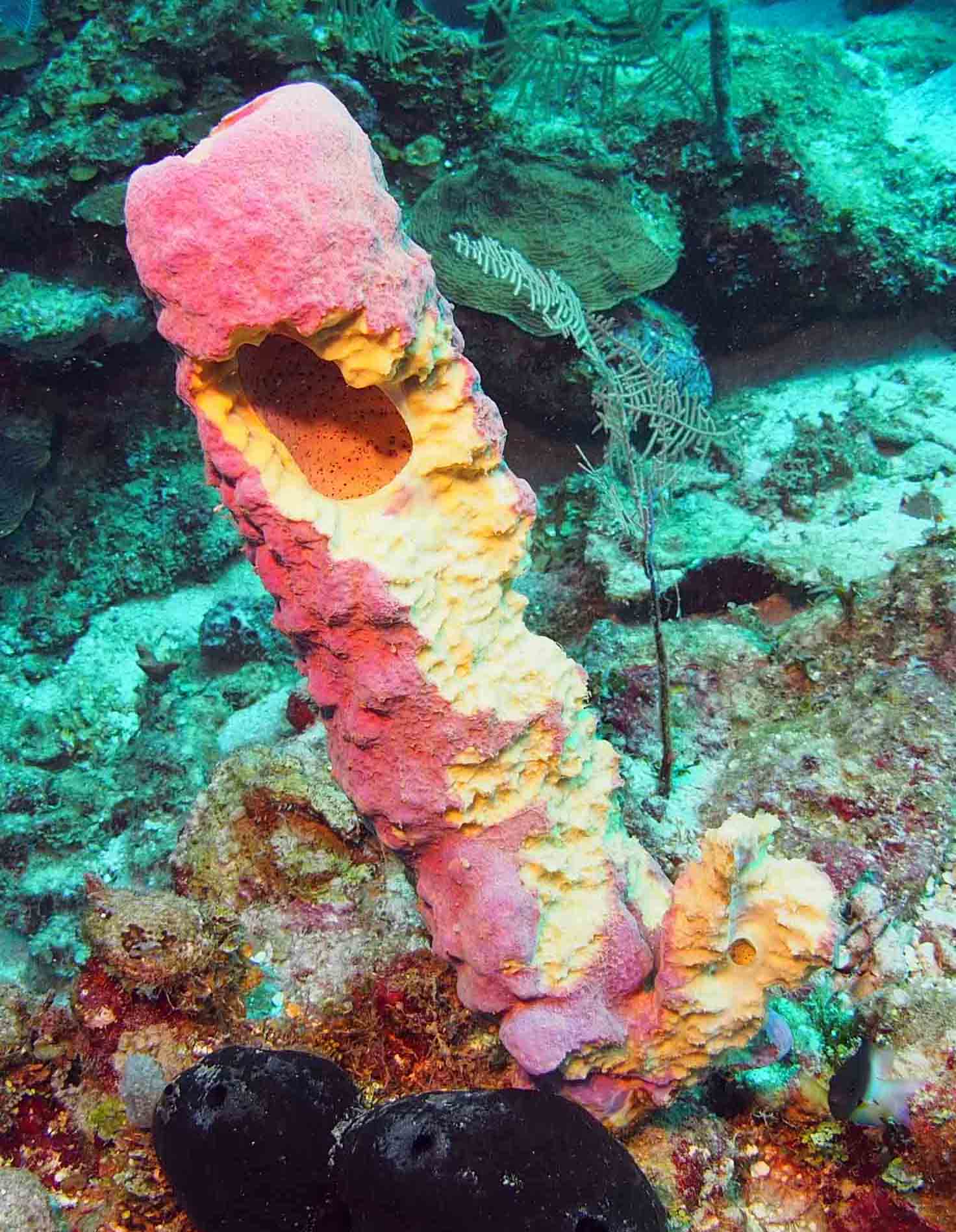
Note that the sponge has healed tissue in the lower right and developed a new oscule.
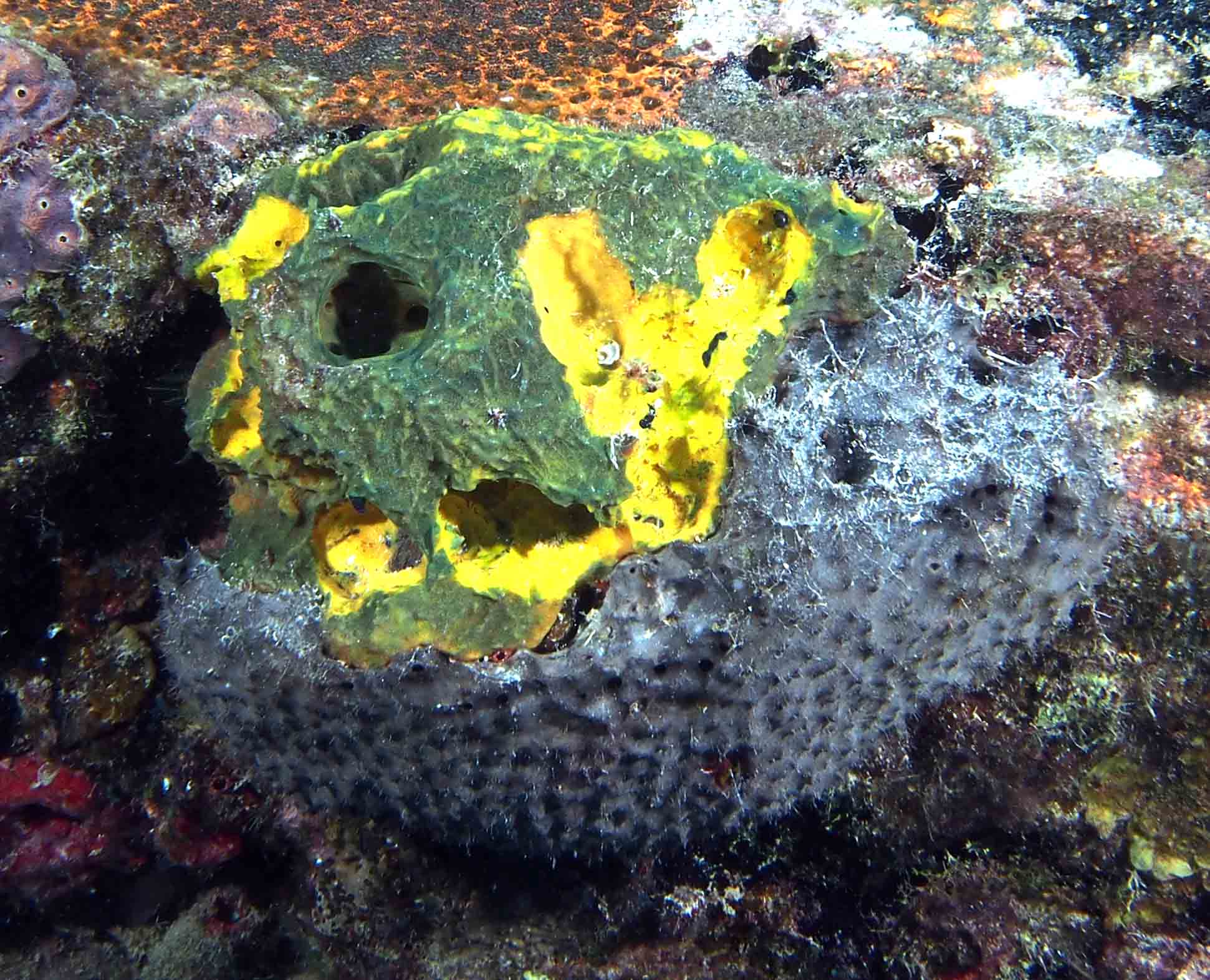
Verongula reiswigii (green and yellow) on the support structure of the Aquarius habitat, Key Largo, Florida, June 2015. This sponge species was found elsewhere on the structure, but grazed only here, where there were crevasses in the frame that permitted the predator to hide. It was not possible to see inside the crevasses. The gray sponge, Ircinia strobilina, is growing below, and was not grazed.
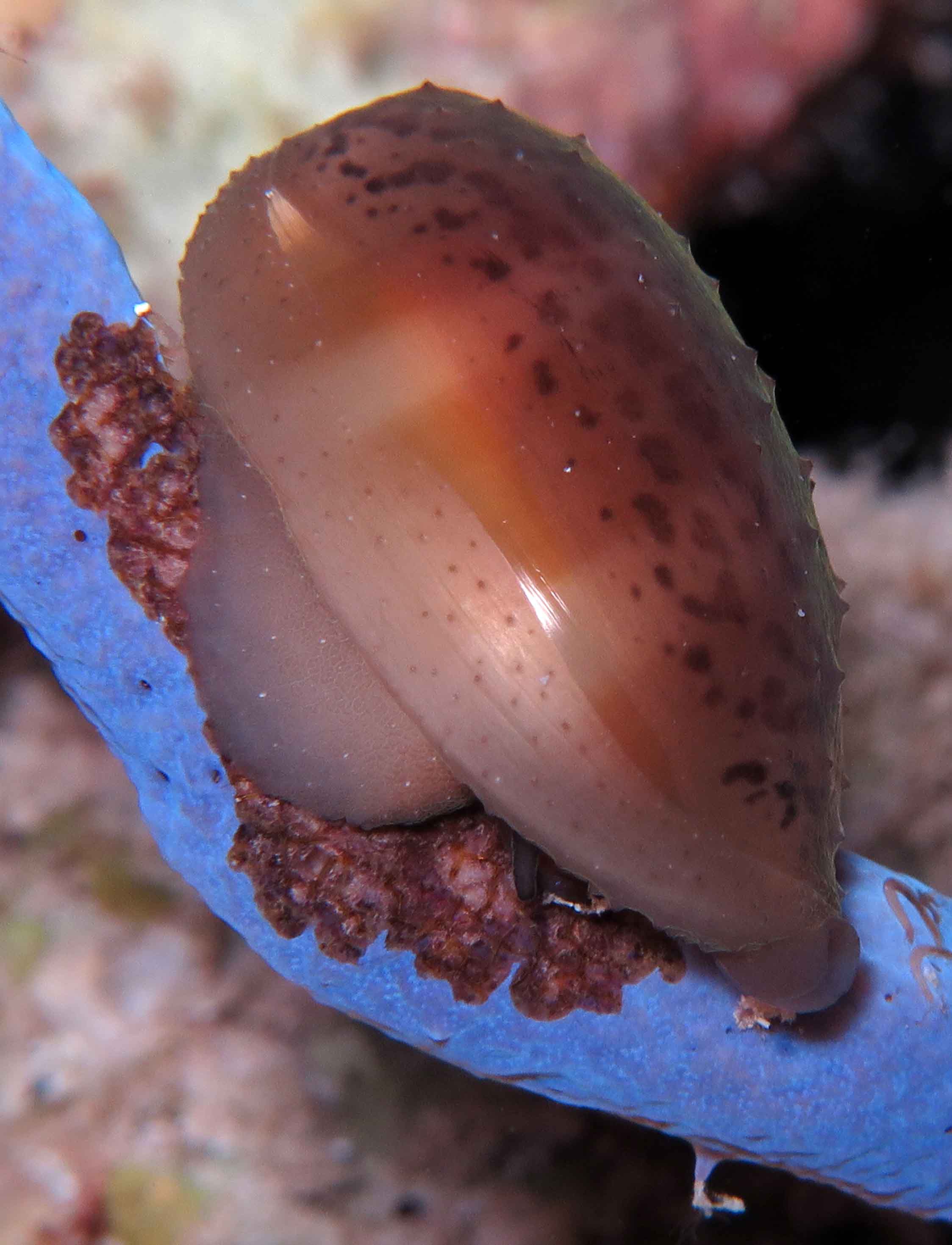
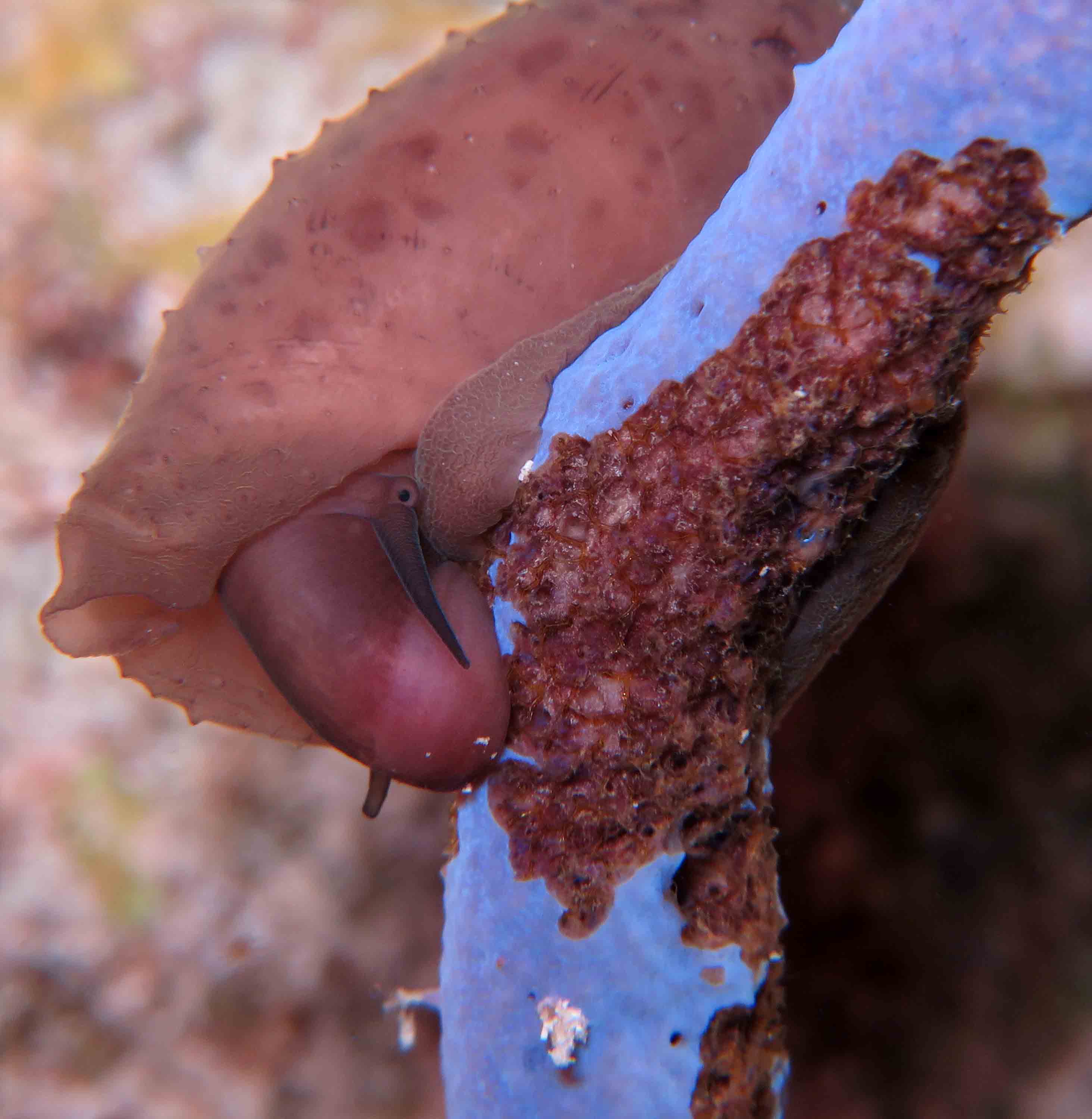
The two beautiful photos above were taken by Ellen Muller (ImagineBonaire), during a night dive on 27 Aug 2015, 8:30 PM at 37 ft depth near the Fuel Pier, Bonaire, Dutch Caribbean.
They show the cowrie Luria cinerea eating the chemically defended sponge Aplysina cauliformis. Note that the grazed areas that are left behind on the sponge could easily be mistaken as necrotic or diseased areas, rather than grazing scars.
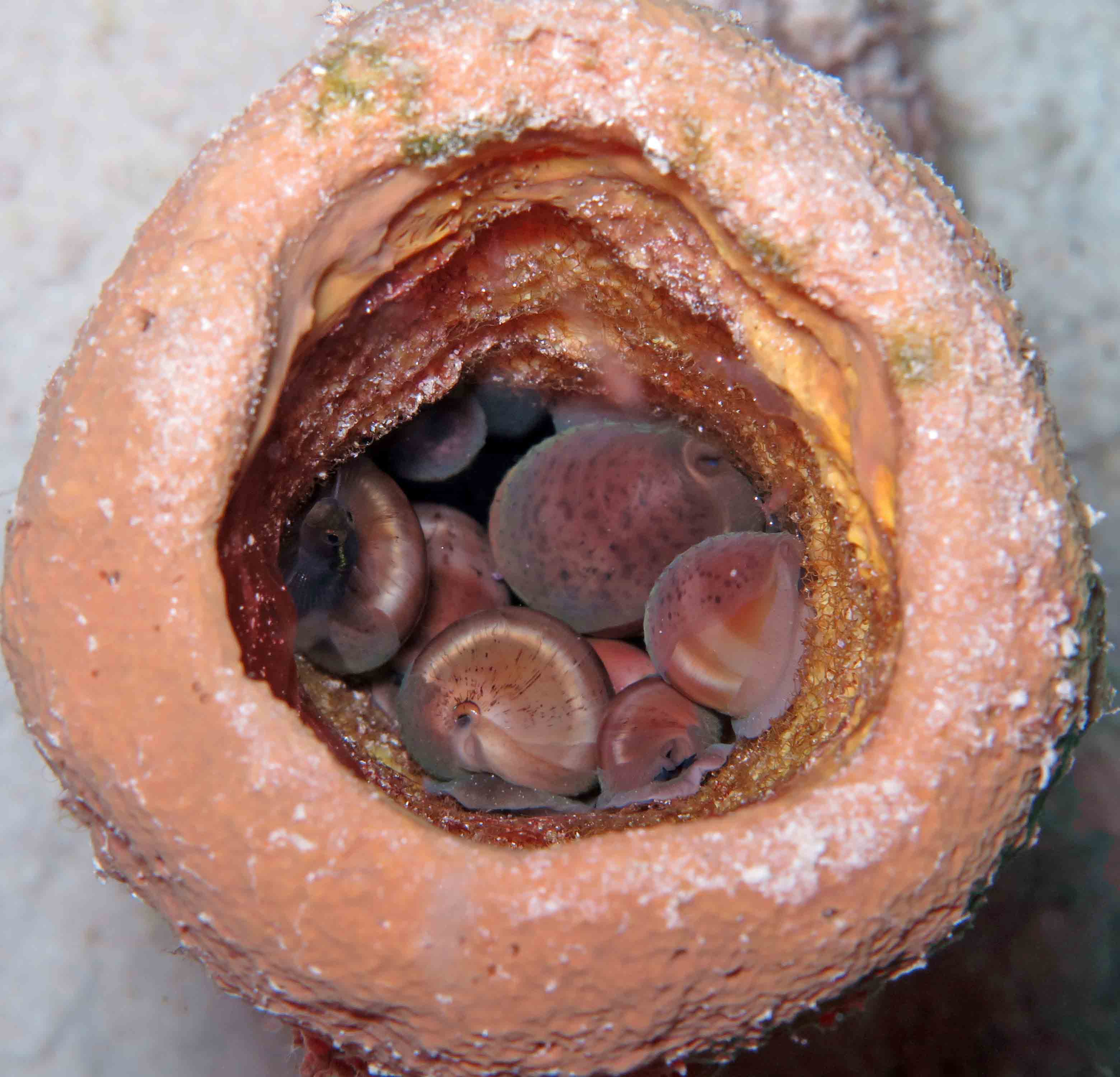
Another beautiful photo above taken by Ellen Muller (ImagineBonaire), during a night dive on 4 Sep 2015 at 37 ft depth, Windsock, Bonaire, Dutch Caribbean.
They show a "nest" of the cowrie Luria cinerea in the chemically defended sponge Aplysina fistularis, with grazing scars on the inside of the sponge.
